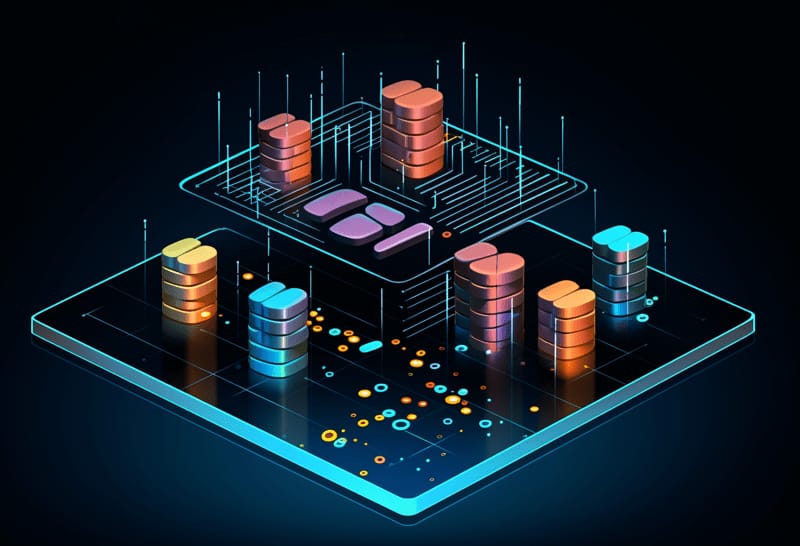New Relic Interview Questions and Answers
With help from industry professionals, our trainers ensures you cover everything needed in an interview fundamental or advanced-level questions alike will all be covered for an assured interview experience.
New Relic is an American digital intelligence firm offering enterprises full-stack visibility and analytics.
This New Relic interview questions provides useful insight and preparation for interviews with ease.

1. What is New Relic, and what are its main offerings?
New Relic is a cloud-based performance management (APM) solution that has been used by over 15,000 Global Enterprises and 12,000 disruptors, as well as small startup companies.
It offers various services to make a system observable, including log security around browsers and other synthetics.
2. What is monitoring in new relic?
Monitoring is a crucial aspect of maintaining the reliability and functionality of various systems, platforms, and applications.
It helps in identifying and addressing issues such as system uptime, server uptime, and root cause analysis.
3. What is observability in new relic?
Observability is a more comprehensive approach to understanding and addressing system issues by focusing on the inner workings of a system.
It provides high-level overviews of system health and highly granular insight into implicit failure modes.
4. What is the difference between monitoring and observability?
Monitoring is best suited for reporting the overall health of the system and generating alerts. Observability, on the other hand, allows for the exploration of the inner workings of a system, providing insights into logs and performance matrices from each service, and enabling the resolution of deeper and more complex problems.
5. What is the role of monitoring in observability?
Monitoring is a part of observability that involves anticipating the future, predicting failures, and performing dependency analysis.
It helps in addressing what’s broken and why it’s broken, covering the larger scope of metrics monitoring.
6. What data should be produced in the world of observability?
In the world of observability, various types of data such as HTTP endpoints, local matrices like CPU RAMs and hard disks, networks, and data centers should be produced.
Help check is also one of the data that should be produced.
7. What is distributed tracing?
Distributed tracing means that the system should be able to gather data in distributed end-to-end tracing information.
This allows for more efficient and effective monitoring and maintenance of the system.
8. What is the micro service concept?
The micro service concept has evolved from a service-oriented architecture to a microservice concept, running in containers and Kubernetes.
This allows for more efficient and effective monitoring and maintenance of the system.
9. Why is observability crucial for monitoring systems?
Observability is crucial for monitoring systems as it helps identify and address issues in the system. It provides valuable insights and solutions to ensure the system’s continued success.
10. What are the four areas of New Relic?
The four areas of New Relic are events, logs, traces, and metrics.
11. What is the role of telemetry in observability?
Telemetry is used for monitoring and capturing data such as logs, matrices, traces, and blowdowns.
12. How has the platform architecture of New Relic evolved?
The platform architecture of New Relic has evolved from monolithic systems to service-oriented architectures, including web servers, app servers, databases, and other server concepts.

New Relic Training

New Relic helps businesses create a better digital experience by setting up observable systems. A system should be up and running 24/7, highly available, scalable, and reliable, which means a system should be in sync with each other to create a brand experience.
Poor digital experiences can lead to customer backlash, negative feedback, and other issues.
14. What are the key features of New Relic’s APM solution?
New Relic’s APM solution offers various features, including a Performance Monitoring System (PMS), server-side monitoring, browser PPM synthetics, and platform insights.
It helps in identifying slow applications, network issues, and serverless slowness and detecting application, network, or service issues, making it an essential component for observability setup.
15. What are some of the benefits of using New Relic’s observability platform?
Some of the benefits of using New Relic’s observability platform include the ability to analyze different matrices, logs, and traces, store them, analyze trends and predict future outcomes, and understand the architecture of neural networks.
This is a completely cloud-based application, hosted on a website called New Relic.com. Users can get a 30-day trial period to learn all the features, starting with infrastructure and
16. How does New Relic help organizations scale their infrastructure?
It includes a browser, mobile, synthetic APM, and market infrastructure.
17. What are some of the pricing options available for New Relic’s services?
The New Relic infrastructure tracks configuration changes, searches across system inventory, and correlates issues across the cloud and hybrid infrastructure environments.
18. What are some of the key capabilities of New Relic?
It also provides monitoring for servers, networks, CPU, RAM, and other components.
19. How does New Relic help organizations save costs?
The application performance monitoring (APM) component, known as synthetics, is used for service uptime, meeting SLAs, and key transactions from multiple global directions.
20. What are some of the popular tools that can be used with New Relic?
Synthetics can be installed in the browser to monitor end-user experiences of the application.
The New Relic APM component, which includes the browser, synthetics, and infrastructure, is crucial for monitoring endpoints.
21. What is the purpose of the New Relic infrastructure plugin?
The purpose of the New Relic infrastructure plugin is to provide a suite of tools for organizations to monitor and address issues across their software environment.
22. What components does the New Relic infrastructure plugin include?
The New Relic APM component monitors endpoints by tracking configuration changes, searching across system inventory, and correlating issues across the cloud and hybrid infrastructure environments.
23. How does the New Relic APM component monitor endpoints?
The New Relic infrastructure plugin includes a browser, mobile, synthetic APM, and market infrastructure.

New Relic Online Training

A virtual machine (VM) is a software emulation of a physical machine that can be used for running applications or services.
25. How can a VM be stored in various locations?
VMs can be stored in various locations such as AWS, Google Cloud, or on a laptop.
26. How is the VM created in AWS for infrastructure monitoring?
To create a VM in AWS for infrastructure monitoring, one must first familiarize themselves with the dashboard of New Relic One. The script requires input from the user, including the New Relic API key, account ID, and the collector port.
27. How does the New Relic agent function on a CentOS machine?
The New Relic agent is installed on a CentOS machine by following the command prompt to verify the presence of New Relic. The script is automated and fully installs the agent, called the N fry agent.
28. How does the script automate the installation of the New Relic agent?
The script is automated to install the agent, and the user’s client is enabled. The client libraries are enabled by default in the new reconfirm agent.
29. What information is displayed on the New Relic dashboard after installation?
The infrastructure agent has been detected, and data is being sent out. The bottom section of the part gets loaded, and all data is sent to the New Relic in a few seconds.
30. How does the user customize and track the activity of the agent on the ADC New Relic?
The speaker also asks about the logs from the infrastructure log, which includes the D and login dot d, which can help identify any issues during installation.
They provide a visual representation of the agent installed on a virtual machine.

31. What is the purpose of logs in the infrastructure log?
The purpose of logs in the infrastructure log is to help identify any issues during installation and provide information about the agent’s performance.
32. What default information does the agent pick up?
By default, the agent picks up CPU, RAM, Docker services, or other data to send to the cloud.
33. How does the agent modify the log and send it to the cloud?
Integration dot d and logging dot are instructions that tell the agent what data to send to the cloud.
34. How does enabling and disabling processes in a storage system help?
Enabling and disabling processes in a storage system helps understand the process better.
35. What data sources can be integrated into New Relic?
New Relic can integrate various data sources, including Apache, Tomcat, MySQL, Docker, and more.
Thank you so much for taking the time to read my blog post about New Relic interview questions and answers, we expect our guidance has assisted with your preparation and provided insight into their company!

New Relic Course Price


Shekar
Author